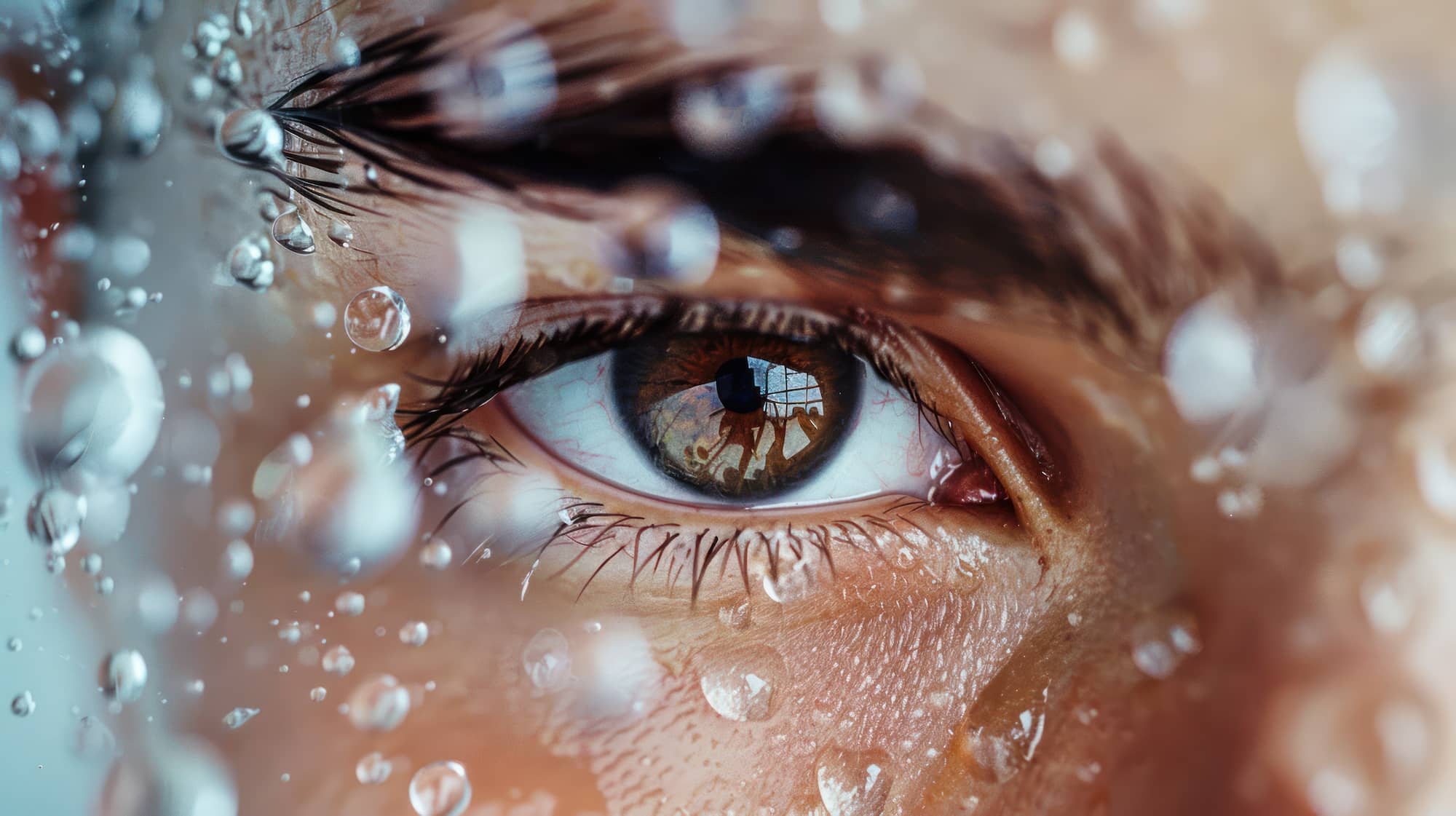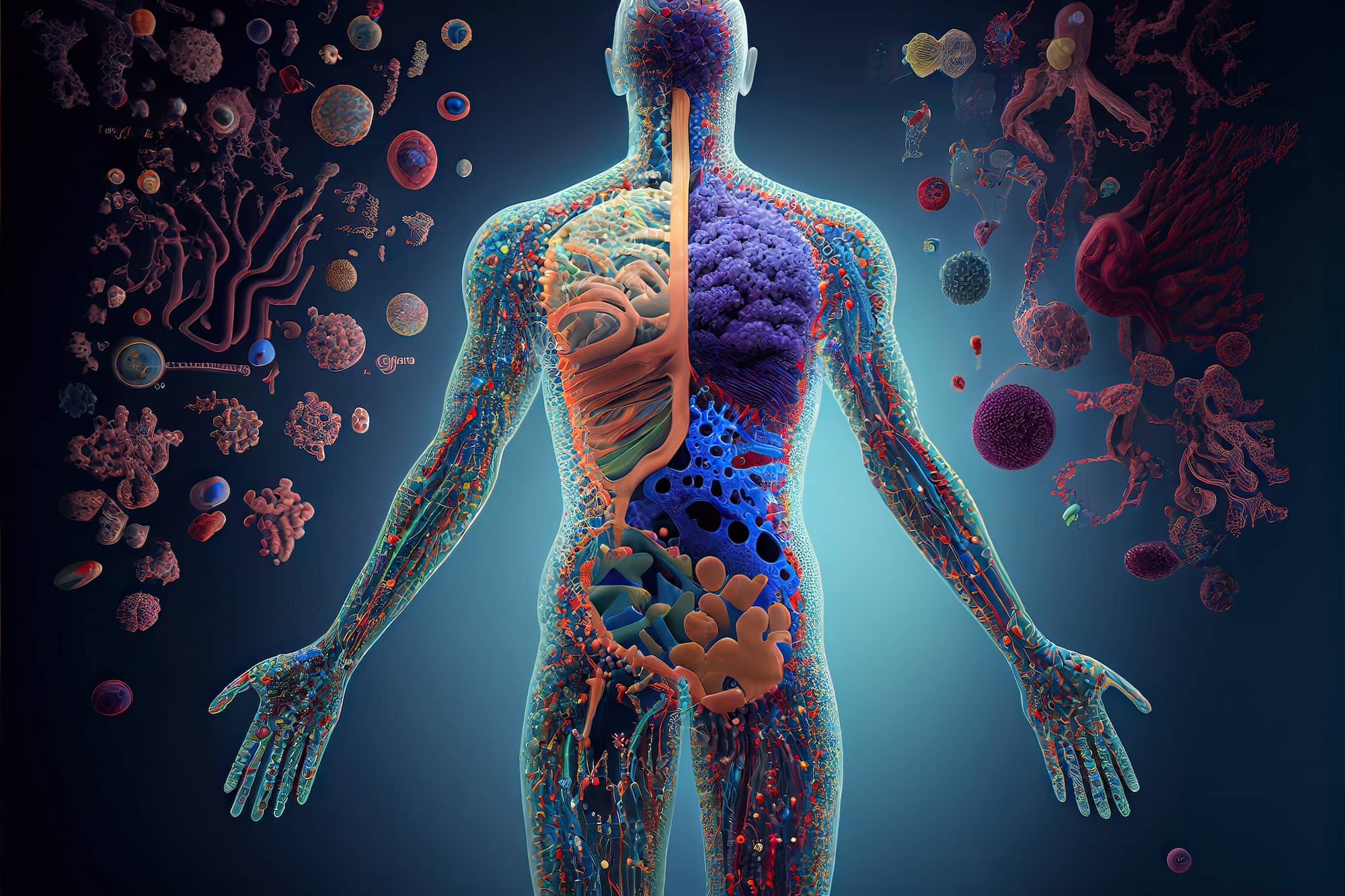Blog
Holiday Stress
Holiday Stress and Your Spine: How Chiropractic Care Keeps You Merry and Bright
The holiday season is a time of joy, family gatherings, and festive celebrations—but it can also bring stress and physical strain. Between decorating, shopping, cooking, and travel, your body endures more than usual, and your spine often bears the brunt. Incorporating chiropractic care into your holiday routine can help you manage the season’s challenges while keeping you feeling merry and bright.
Tackling Holiday Stress
Stress during the holidays is nearly unavoidable. Emotional strain, coupled with physical activities like lifting heavy boxes or standing for hours in the kitchen, can leave your spine misaligned and muscles tense. Misalignments, or subluxations, in your spine not only cause discomfort but can also interfere with your nervous system, amplifying stress and fatigue. Chiropractic adjustments help restore alignment, improving your body’s ability to handle stress effectively.
Preventing Holiday Injuries
From hauling decorations out of storage to trudging through crowded malls, holiday activities can lead to unexpected injuries. Improper posture while lifting or overexerting yourself during housework can strain your back and neck. Regular chiropractic visits ensure your spine stays in optimal condition, reducing the risk of injuries and keeping you active through the season.
Boosting Overall Wellness
Chiropractic care is about more than pain relief; it’s about supporting your body’s overall wellness. Adjustments can improve your posture, increase flexibility, and even enhance your immune system. A strong, aligned body is better equipped to fight off seasonal illnesses, helping you stay healthy enough to enjoy every festive moment.
Travel Comfortably
If holiday plans include travel, long hours in cars or planes can wreak havoc on your spine. Chiropractic adjustments before and after trips ensure your body stays balanced and ready for the journey. Stretching techniques and posture tips provided by your chiropractor can make a world of difference in avoiding stiffness and discomfort.
This December, prioritize your spinal health to truly enjoy the magic of the holidays. Chiropractic care offers relief, injury prevention, and improved wellness, allowing you to embrace the season with comfort and joy. Schedule a visit today and let your chiropractor help you stay aligned, stress-free, and ready to celebrate!
Click here to contact our Office or call (408) 263-8025
Travel Tips for Thanksgiving
Staying Comfortable with Chiropractic Support
Thanksgiving is a time for family gatherings, but for many, it also means long hours of travel by car, plane, or train. These journeys can take a toll on your body, especially your spine and joints. Fortunately, chiropractic care can help you stay comfortable and pain-free during your holiday travel.
Travel tips before hitting the road should include scheduling a chiropractic adjustment. A properly aligned spine ensures better posture, reduces tension, and optimizes your body’s ability to handle prolonged sitting. Chiropractors can also recommend stretches and exercises tailored to your specific needs, keeping your muscles relaxed and your joints mobile during the journey.
During travel, it’s essential to maintain good posture to avoid back and neck strain. Use a supportive travel pillow to keep your neck aligned and take breaks to stretch and move around every hour or so. If you’re driving, adjust your seat to support your lower back, and if flying, opt for an aisle seat to have more freedom to stretch. Staying hydrated is equally important, as proper hydration keeps your joints lubricated and your muscles flexible.
Once you arrive at your destination, it’s common to feel stiff or fatigued. Gentle stretches or yoga can help release built-up tension, while a chiropractic adjustment post-travel can address any lingering discomfort. Chiropractic care not only alleviates pain but also enhances circulation and reduces inflammation, helping you recover faster and fully enjoy your Thanksgiving celebrations.
This Thanksgiving, don’t let travel woes ruin your holiday spirit. Use these Travel tips and include chiropractic support into your travel routine, you can arrive at your destination feeling relaxed and ready to embrace the festivities. Chiropractic care offers a proactive way to maintain your health and comfort, making your holiday travel a breeze. Schedule your appointment today and give thanks for a pain-free journey.
Click here to contact our Office or call (408) 263-8025
Weather Change
Managing Weather Change Stress with Chiropractic Care
Seasonal changes, especially shifts into colder months, can bring about stress for many people. Reduced daylight hours, fluctuating temperatures, and barometric pressure changes can impact both physical and mental well-being. These environmental changes can disrupt sleep, increase fatigue, and even cause joint stiffness and pain. Chiropractic care offers natural relief from these seasonal effects by focusing on improving nervous system function, reducing tension, and helping the body adapt to stress.
How Weather Changes Affect the Body
Sudden drops in temperature or atmospheric pressure can cause the body to tense, leading to muscle stiffness and joint discomfort. Cold weather can also exacerbate existing conditions like arthritis, and seasonal stress can increase inflammation, which makes muscles and joints feel achy and sore. These physical symptoms often add to mental stress, creating a cycle that can affect mood, energy, and overall comfort.
Chiropractic Adjustments for Stress Relief
Chiropractic adjustments help relieve stress by focusing on spinal alignment, which directly impacts the nervous system. When your spine is misaligned, communication between the brain and body can become disrupted, leading to increased tension and decreased adaptability to environmental changes. A well-aligned spine promotes better nerve function, allowing the body to manage stress more efficiently. Regular adjustments also release endorphins, natural pain relievers that elevate mood and promote relaxation.
Reducing Muscle Tension and Pain
Cold weather often causes muscles to contract, which leads to stiffness and soreness. Chiropractic care addresses this by relieving tension in the muscles and joints, allowing them to relax. Techniques like spinal adjustments and soft tissue therapy not only reduce pain but also support better circulation. Improved circulation keeps muscles more flexible and joints more mobile, reducing the likelihood of pain from weather-induced tension.
Enhancing Overall Well-Being
In addition to adjustments, chiropractors often recommend holistic practices like stretching, light exercise, and good posture to support overall well-being. This proactive approach helps the body better handle seasonal shifts by maintaining flexibility, reducing inflammation, and lowering stress.
Chiropractic care provides effective relief from the physical and mental stress brought on by seasonal weather changes. Through spinal alignment, tension reduction, and holistic support, chiropractic adjustments empower the body to adapt to the changing season with resilience.
Click here to contact our Office or call (408) 263-8025
Time Change Stress
The shift in time during daylight saving changes can disrupt our bodies more than we realize. Losing or gaining an hour may seem trivial, but this shift often affects sleep patterns, mood, and stress levels. The body’s internal clock, known as the circadian rhythm, is sensitive to time changes, leading to symptoms like irritability, lack of focus, and increased stress. For many people, chiropractic care offers an effective solution to relieve stress caused by a time change.
The Impact of Time Change on the Body
When the clocks shift, your body must adjust its biological rhythms to match the new time. This change can interfere with sleep, leaving you feeling fatigued and more prone to stress. Even minor disruptions in sleep can trigger an imbalance in the body, leading to irritability, headaches, and heightened anxiety. Physical symptoms, like muscle tension and pain, often accompany stress, creating a cycle that affects overall well-being.
How Chiropractic Adjustments Help
Chiropractic adjustments can significantly help in mitigating the stress that follows time changes. When the spine is misaligned, it can impede proper nervous system function, affecting your body’s ability to adapt to changes. Chiropractic adjustments help realign the spine, improving communication between the brain and the rest of the body. This realignment allows your body to manage stress more effectively and promotes relaxation.
Reducing Muscle Tension and Pain
Stress often manifests physically in the form of muscle tension, tightness, and headaches. Chiropractic adjustments help relieve this tension by focusing on correcting spinal misalignments that contribute to these symptoms. By alleviating muscle stress, chiropractors can help reduce the physical effects of anxiety and improve your overall comfort.
Promoting Better Sleep
Quality sleep is crucial for your body to adapt to time changes. Chiropractic care can improve sleep by addressing misalignments that disrupt normal rest patterns. When your spine and nervous system are functioning optimally, your body can regulate sleep more effectively. Regular adjustments not only alleviate pain that disrupts sleep but also help maintain a healthier sleep cycle during the transition.
Enhancing Overall Well-Being
Beyond direct stress relief, chiropractic care enhances overall well-being. Chiropractors often provide lifestyle and posture advice, helping patients adopt healthy habits that support their body’s response to stress. This holistic approach ensures your body remains balanced and capable of handling changes like time shifts.
While time changes can be stressful, chiropractic adjustments offer relief by improving sleep, reducing muscle tension, and realigning the spine. By supporting the nervous system and promoting relaxation, chiropractic care can help you manage stress effectively.
Click here to contact our Office or call (408) 263-8025
Halloween
Halloween brings excitement with trick-or-treating, costumes, and festive activities, but it can also put stress on your spine. Whether you’re walking long distances with your kids, carrying heavy bags of candy, or setting up decorations, it’s essential to protect your back and posture during these fun events. Here are some chiropractic tips to help you enjoy Halloween without unnecessary aches and pains.
1. Use a Backpack or Rolling Bag for Candy
Carrying heavy bags of candy in one hand can strain your shoulders and spine. Opt for a backpack to distribute the weight evenly or use a small rolling bag to reduce stress on your body. If kids are carrying candy, check their bags periodically to ensure they’re not too heavy for their size.
2. Wear Supportive Shoes
If you’re out trick-or-treating, you’ll likely walk a lot. Avoid footwear that lacks support, like flip-flops or flat shoes, which can lead to foot pain and misalignment in your spine. Choose cushioned, supportive shoes that will keep you comfortable and protect your posture throughout the night.
3. Stretch Before and After Walking
Long walks, especially in the cold, can tighten muscles and leave you stiff. Take a few minutes to do some light stretching before heading out. After the festivities, stretch again to keep your muscles loose and prevent back or joint pain.
4. Lift Decorations Properly
When lifting pumpkins or other heavy Halloween decorations, use your legs, not your back. Bend your knees, keep the object close to your body, and avoid twisting your torso. These simple adjustments will reduce the risk of back strain.
5. Take Breaks to Prevent Fatigue
If you’re walking through neighborhoods or setting up elaborate decorations, remember to take breaks. Fatigue can lead to poor posture and increase the risk of injury. Give yourself time to rest, hydrate, and stretch if needed.
6. Schedule a Chiropractic Adjustment
Even with precautions, festive activities can take a toll on your body. A chiropractic adjustment can realign your spine, relieve tension, and prevent minor aches from turning into chronic problems.
By following these tips, you can keep your spine healthy and enjoy all the fun Halloween has to offer. Stay active, but protect your body to ensure a pain-free, festive season!
Click here to contact our Office or call (408) 263-8025
Autumn Activities
As the crisp air of fall sets in, it’s the perfect time for Autumn activities to maintain your health. However, the changing weather and increased outdoor activities like yard work can sometimes lead to muscle strain or stiffness. Chiropractic care can play an essential role in keeping you active and injury-free during the fall season. Here are some tips to help you stay moving and feeling your best as the seasons change.
1. Stretch Before Outdoor Activities
Whether you’re going for a hike or raking leaves, stretching is crucial to prevent injuries. Cooler temperatures can cause muscles to tighten more quickly, making them more susceptible to strain. Chiropractors recommend dynamic stretches that focus on the muscles you’ll be using during Fall activities. For example, if you’re doing yard work, focus on your hamstrings, lower back, and shoulders to loosen tight areas before you start.
2. Maintain Proper Posture
Good posture is key to avoiding injury during any physical activity, and it’s especially important when doing repetitive tasks like lifting, bending, or raking. Improper posture places unnecessary strain on your spine and joints, leading to discomfort or long-term damage. Chiropractors can assess your posture and provide guidance on how to stand, sit, or move correctly during common fall activities, helping you avoid back pain and joint issues.
3. Stay Hydrated
People often forget to drink enough water in cooler weather. However, dehydration can lead to muscle cramps, fatigue, and reduced flexibility. Chiropractors emphasize staying hydrated to keep your muscles functioning optimally and to avoid injuries. Drinking plenty of water supports joint health and ensures your body is better prepared for physical activity.
4. Dress Warm and Stay Flexible
Fall weather can be unpredictable, with fluctuating temperatures. It’s important to dress in layers so you can stay warm but still maintain flexibility. Cold muscles are more prone to injury, so keeping your body warm during outdoor activities helps prevent strains. A chiropractor can recommend gentle warm-up exercises to get your muscles primed for activity, as well as tips on clothing to support movement.
5. Schedule Regular Chiropractic Adjustments
Fall is an excellent time to visit your chiropractor. Regular adjustments help align your spine and joints, keeping your body in optimal shape for activity. Chiropractic care improves your body’s mobility, reduces stiffness, and prevents injuries by addressing any misalignments or tightness that could hinder your movement.
Autumn Activities are essential for maintaining your health and enjoying the season. By following these chiropractic tips—stretching, maintaining good posture, staying hydrated, dressing warmly, and getting regular adjustments—you can make the most of the cooler months without risking injury.
Click here to contact our Office or call (408) 263-8025
Fall Yard Work
Fall brings beautiful changes in nature, but it also comes with an increase in outdoor chores like raking leaves, cleaning gutters, and preparing your yard for winter. While these tasks are essential, they can be physically demanding and increase the risk of injury, especially to the back, shoulders, and neck. This is where chiropractic care can make a significant difference. By keeping your spine aligned and your muscles functioning properly, chiropractic adjustments help prevent injuries during fall yard work.
Improves Flexibility and Mobility
One of the key benefits of chiropractic care is improved flexibility and mobility. Regular adjustments help keep the spine in proper alignment, which reduces tension in surrounding muscles and joints. This is crucial when performing repetitive tasks like bending, lifting, or twisting while raking or gardening. Without proper mobility, these movements can lead to muscle strain, joint pain, or even serious injury. A chiropractic checkup before starting your fall yard work ensures your body is in its best possible condition to handle these physically demanding activities.
Reduces the Risk of Back Strain
Raking leaves, hauling heavy bags, and lifting equipment can put excessive pressure on the lower back. Many people suffer from back strain during fall due to improper lifting techniques or overexertion. Chiropractic care focuses on maintaining proper spinal alignment, which helps evenly distribute the physical load across the body, preventing any one area—especially the lower back—from bearing too much strain. Chiropractors can also provide helpful tips on proper posture and body mechanics to reduce the risk of injury when lifting heavy items.
Relieves Muscle Tension
Yard work can cause muscles to tighten, especially in the neck, shoulders, and upper back. Chiropractic adjustments relieve muscle tension by releasing tight spots, allowing muscles to relax and function more efficiently. In addition to realigning the spine, chiropractors use techniques like soft tissue therapy to loosen stiff muscles, which is essential for preventing injuries that often result from muscle overuse.
Speeds Up Recovery After Yard Work
Even with precautions, yard work can leave you feeling sore or fatigued. Chiropractic care not only helps prevent injury but also speeds up recovery by promoting healthy blood flow and reducing inflammation in the body. After a session of strenuous yard work, a chiropractic adjustment can help alleviate any lingering aches or pains, ensuring that minor strains don’t turn into long-term issues.
Enhances Overall Wellness
Chiropractic care goes beyond treating injuries; it also helps promote overall health and well-being. By ensuring your spine and nervous system are functioning at their best, you can take on fall yard work with confidence, knowing your body is aligned and ready to perform at its peak.
In conclusion, chiropractic care plays a vital role in preventing injuries during fall yard work. By improving flexibility, relieving muscle tension, and supporting proper posture, regular chiropractic adjustments help you safely and efficiently tackle the outdoor chores that come with the season.
Click here to contact our Office or call (408) 263-8025
Stress Relief
In today’s fast-paced world, stress has become a common part of everyday life. Whether it’s from work, family responsibilities, or financial concerns, stress impacts both mental and physical well-being. One often overlooked method for managing stress is regular chiropractic adjustments. Chiropractic care not only addresses physical discomfort but also helps the body manage and relieve stress more effectively.
Reduces Physical Tension
Stress often manifests in the body as muscle tension, particularly in the neck, shoulders, and back. This tension can lead to discomfort and pain, which further contributes to feelings of stress. Regular chiropractic adjustments target these areas of tension by realigning the spine and releasing muscle tightness. When the body is free from physical tension, it becomes easier to relax, helping to break the cycle of stress and discomfort.
Improves Nervous System Function
The spine houses the central nervous system, which controls nearly every function in the body, including how it responds to stress. Misalignments in the spine, known as subluxations, can interfere with nerve signals and hinder the body’s ability to cope with stress. Chiropractic adjustments correct these misalignments, allowing the nervous system to function at its best. When the nervous system is balanced and free from interference, the body is better equipped to handle stress, leading to improved mental clarity and emotional resilience.
Enhances Hormonal Balance
Stress relief through chiropractic care can also positively impact the body’s hormonal balance. Regular adjustments have been shown to influence the production of cortisol, the hormone most closely associated with stress. By helping to regulate cortisol levels, chiropractic care allows the body to better manage its stress response, reducing feelings of anxiety and tension. Additionally, chiropractic adjustments promote the release of feel-good hormones such as endorphins, which naturally improve mood and overall well-being.
Promotes Better Sleep
Stress often disrupts sleep, leaving people feeling fatigued and less capable of managing daily challenges. Chiropractic care improves sleep quality by reducing pain and discomfort, relaxing the nervous system, and promoting overall balance in the body. When you sleep better, your body has more energy to cope with stress and maintain a positive outlook.
Supports a Holistic Approach to Health
Chiropractic care encourages a holistic approach to health, focusing on the connection between the body and mind. Regular adjustments not only treat physical symptoms but also help individuals feel more centered and less overwhelmed by daily stressors. Chiropractors often offer lifestyle advice, such as exercise recommendations and nutritional guidance, to further support stress relief and overall wellness.
In conclusion, regular chiropractic adjustments play a crucial role in managing stress. By relieving physical tension, improving nervous system function, balancing hormones, and enhancing sleep, chiropractic care helps individuals achieve a healthier, more balanced response to the stresses of life.
Click here to contact our Office or call (408) 263-8025
Spine Health
As students return to school, their backpacks grow heavier, and their screen time increases. These factors can have a lasting impact on their posture and spinal health if not addressed early. By taking simple steps, you can protect your child’s spine and promote healthy habits that last a lifetime.
Choose the Right Backpack
The first step in preventing spinal issues is selecting the right backpack. A well-designed backpack should have two wide, padded straps to distribute weight evenly across the shoulders. Encourage your child to use both straps rather than slinging it over one shoulder. A backpack with multiple compartments will help organize items and balance the load, preventing strain on their back.
Keep It Light
A heavy backpack is one of the most common causes of poor posture in students. Ensure that your child’s backpack weighs no more than 10-15% of their body weight. Teach your child to prioritize what they carry, leaving unnecessary books and items at home or in their locker. Regularly cleaning out the backpack helps reduce the load and prevents long-term stress on the spine.
Teach Good Posture
When sitting in class or at home studying, posture is key. Encourage your child to sit up straight, keeping both feet flat on the floor and their back against the chair. Their shoulders should be relaxed, and their head level with their monitor or textbook. Slouching or leaning forward places stress on the spine and can lead to discomfort over time.
Screen Time Awareness
With increased screen time for schoolwork and recreation, it’s important to address “tech neck” — the strain caused by looking down at devices. Encourage your child to hold screens at eye level and take regular breaks to stretch and move around. Setting a timer for breaks can help remind them to adjust their posture and prevent strain.
Regular Chiropractic Checkups
Preventive care can go a long way in maintaining your child’s spinal health. Regular chiropractic checkups help identify any posture issues early on and provide adjustments that can correct misalignments. A chiropractor can also offer personalized advice on maintaining good posture throughout the school year.
Protecting your child’s spine now will set them up for a healthy future. By following these simple tips, you can prevent unnecessary pain and discomfort during the busy school year.
Click here to contact our Office or call (408) 263-8025
Immune Function
Chiropractic care, often associated with relieving back pain and improving spinal health, plays a more significant role in overall wellness than many realize. Recent research highlights how chiropractic adjustments can boost immune function, providing a holistic approach to health that goes beyond pain management.
The immune system is our body’s defense against infections and diseases. It works tirelessly to identify and destroy harmful invaders like bacteria and viruses. However, a compromised or weakened immune system can lead to increased susceptibility to illnesses. This is where chiropractic care steps in.
The central nervous system, which includes the brain and spinal cord, controls every function in our body, including the immune system. When the spine is misaligned, it can disrupt the communication between the nervous system and the immune system, potentially weakening the body’s ability to fend off illness. Chiropractic adjustments correct these misalignments, or subluxations, restoring proper nerve function and, consequently, enhancing immune response.
Several studies support the connection between chiropractic care and improved immune function. For instance, research published in the Journal of Manipulative and Physiological Therapeutics found that chiropractic adjustments can influence specific immune system components, such as increasing the production of white blood cells. White blood cells are crucial for fighting infections, and an increase in their production suggests a more robust immune response.
Another study conducted by Dr. Ronald Pero, a leading cancer prevention researcher, revealed that individuals who received regular chiropractic care had a 200% greater immune competence than those who didn’t. His findings suggest that spinal adjustments may not only help maintain a well-functioning immune system but also potentially protect against illnesses.
Chiropractic care promotes overall wellness by reducing stress.
Stress is known to weaken the immune system. Chronic stress leads to the release of cortisol, a hormone that can suppress immune function. By alleviating physical stress through spinal adjustments, chiropractic care helps to lower cortisol levels, thereby supporting a stronger immune system.
Incorporating chiropractic care into your wellness routine is a proactive step towards enhancing your body’s natural defense mechanisms. Regular adjustments can keep your spine aligned, ensuring that your nervous system communicates effectively with your immune system. As a result, your body is better equipped to prevent illness and maintain optimal health. With the backing of emerging research, chiropractic care stands out as a powerful tool in supporting and boosting immune function, offering a holistic approach to staying healthy year-round.
Click here to contact our Office or call (408) 263-8025









